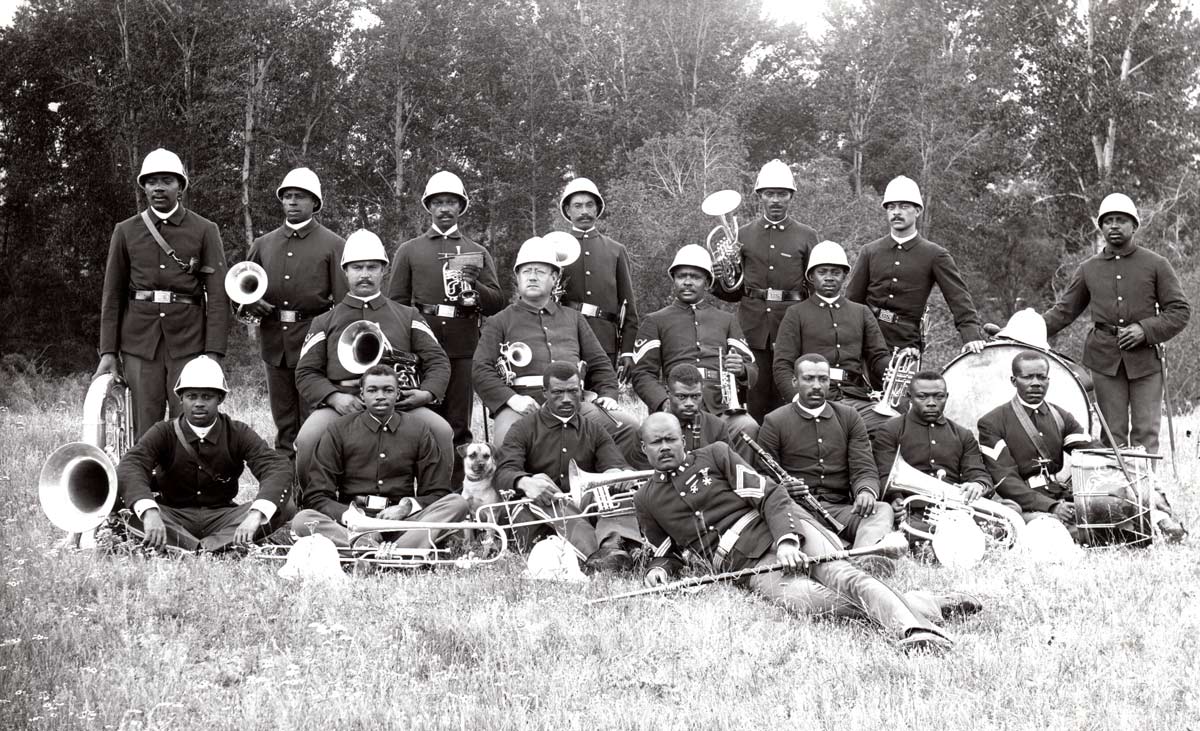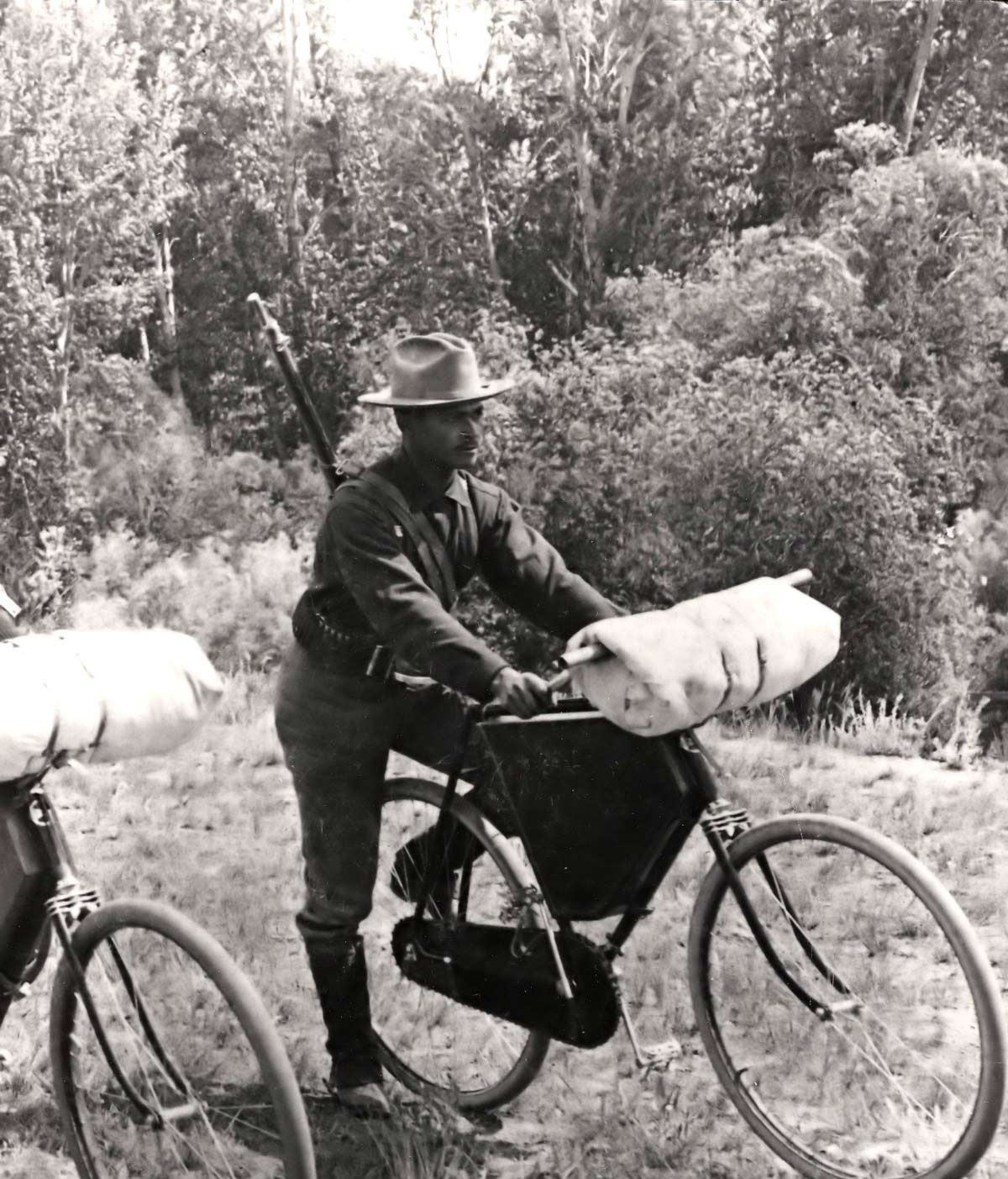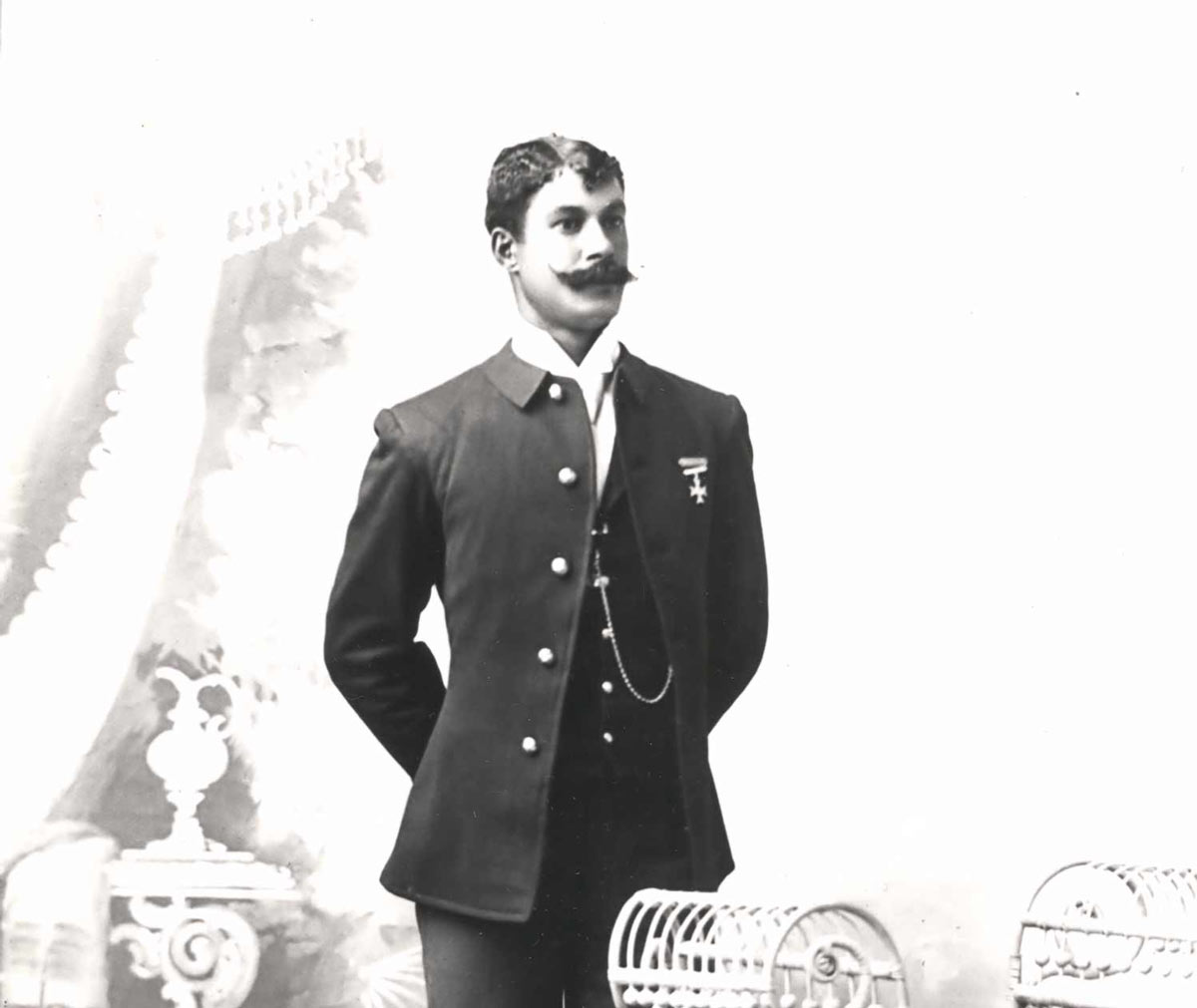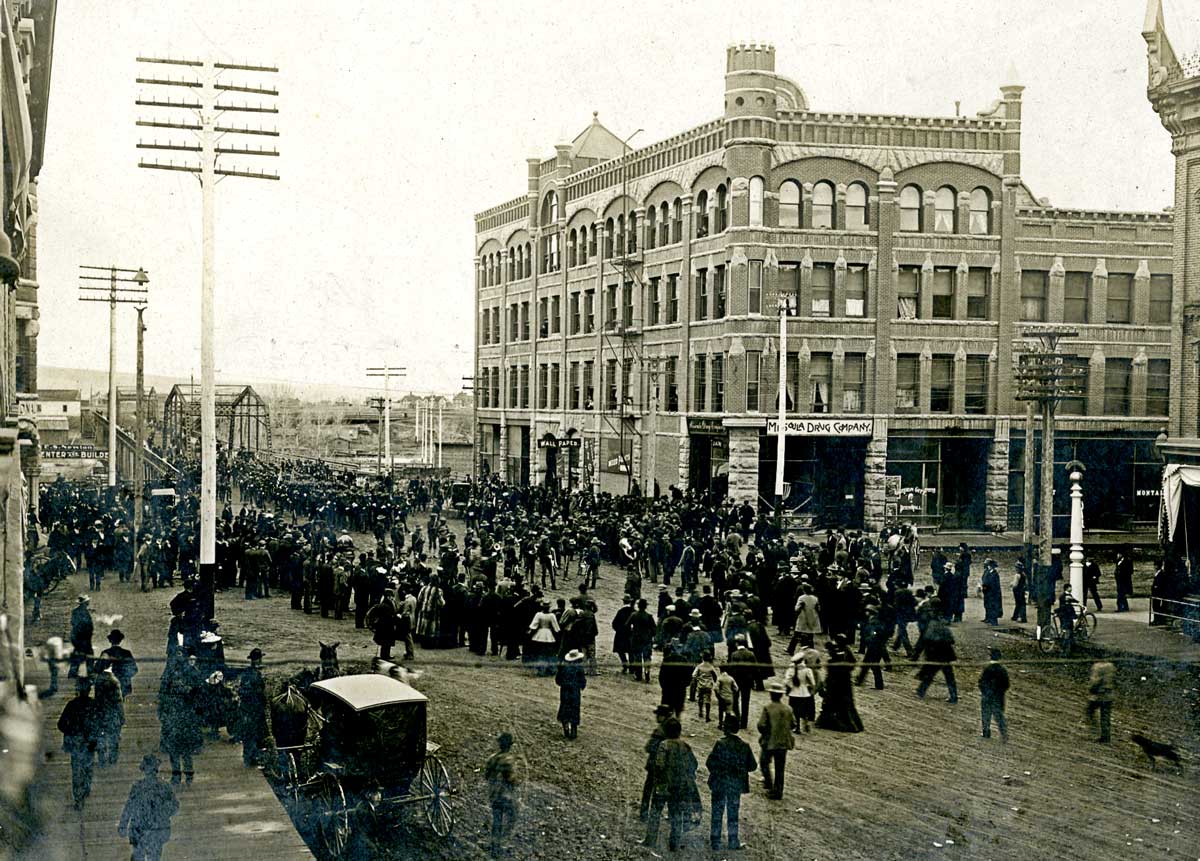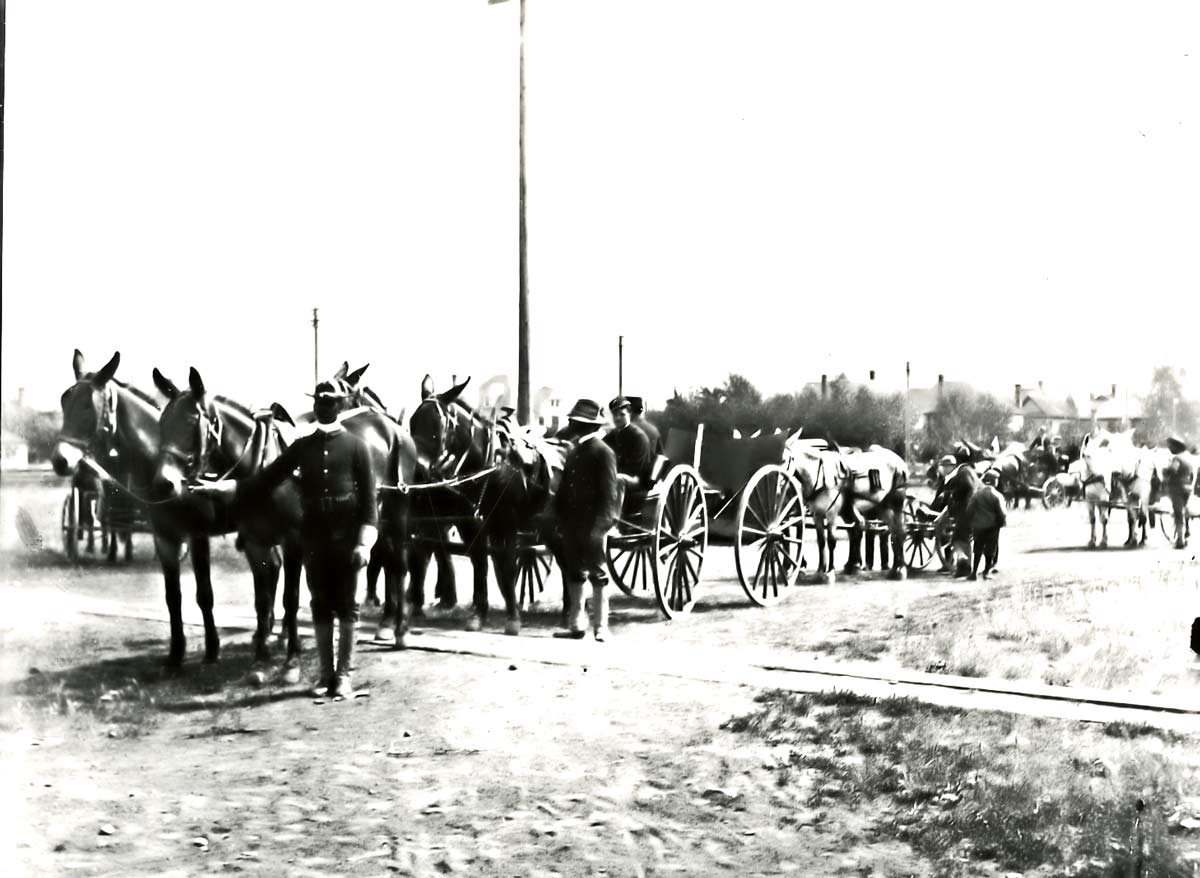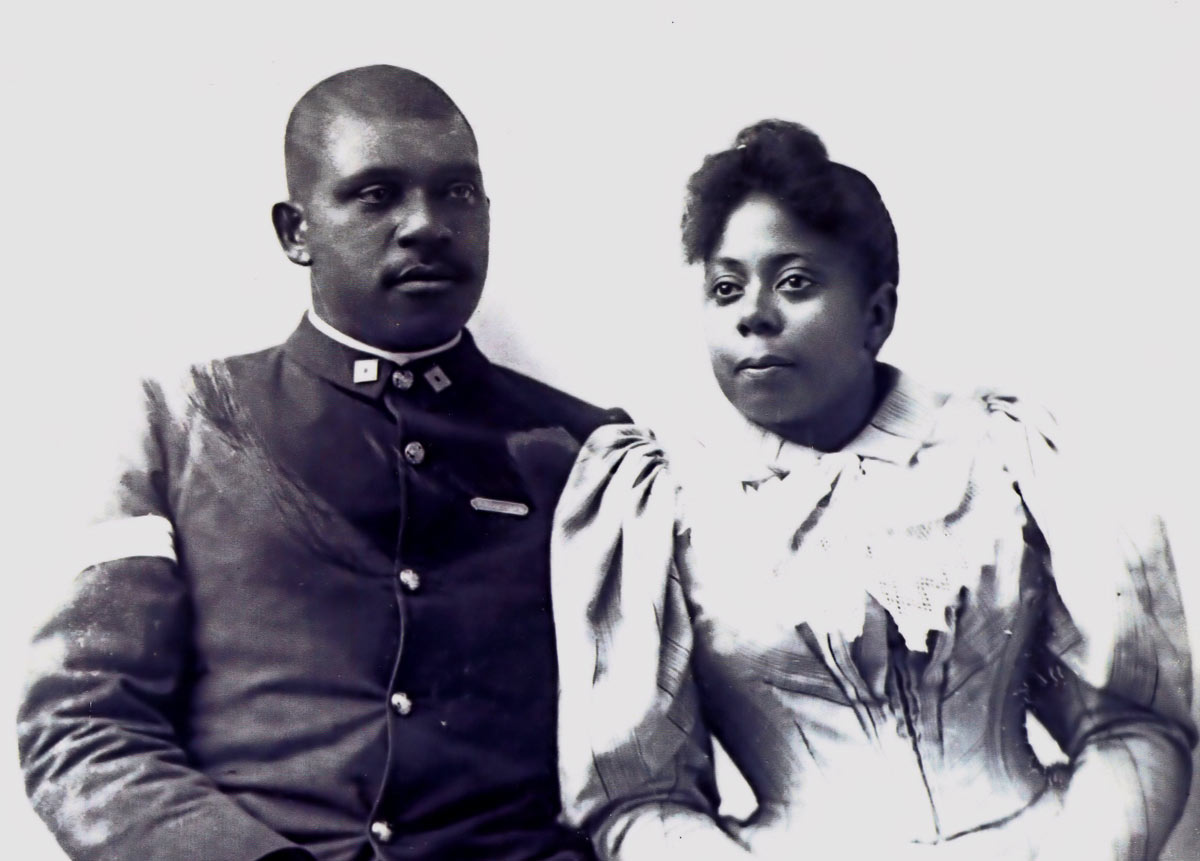The widespread popularity of the bicycle caught the attention of military leaders in the United States during the late 1800s. Major General Nelson A. Miles, as Army Commander-in-Chief, expressed his interest by recommending that one full regiment be equipped with bicycles in 1892, and that existing troops at different posts around the country use bicycles to obtain a thorough knowledge of their own country, especially the topographical features, conditions of the roads, sources of supplies, and all information of military importance.
On May 12, 1896, Fort Missoula’s 2nd Lieutenant James A. Moss received permission to organize the 25th Infantry Bicycle Corps, the first of its kind in the country. Moss, a native of Louisiana and a West Point graduate, was an avid cyclist who set out to thoroughly test the practicality of the bicycle for military purposes.
Moss contacted the A. G. Spalding Company, who provided military bicycles at no cost. The Corps, consisting of eight black enlisted men, soon was riding in formation, drilling, scaling fences up to nine-feet high, fording streams, and pedaling 40 miles a day. Each bicycle carried a knapsack, blanket roll, and a shelter strapped to the handlebar. A hard leather frame case fit into the diamond of each bicycle and a drinking cup was kept in a cloth sack under the seat. Each rider carried a rifle (first slung over the back, later strapped to the horizontal bar) and 50 rounds of ammunition.
The Spalding military bicycles were furnished with steel rims, tandem spokes, extra-heavy side-forks and crowns, gear cases, luggage carriers, frame cases, brakes, and Christy saddles. They were geared to 68 inches and weighed 32 pounds. The average weight of the bicycles, packed, was about 59 pounds.
Training trips consisted of a series of rides of increasing lengths, including a trek to Lake McDonald in the Mission Mountains. By August 1896, Lieutenant Moss was ready for a major expedition; a trip from Fort Missoula to Yellowstone National Park and back – 800 miles in total. The Bicycle Corps left Missoula on August 15. Moss kept a detailed log of each day’s progress, noting the types of grade, road conditions, and weather that the Corps encountered along the way. The Corps arrived in Yellowstone on August 24, 1896.
Pleased by the success of his Yellowstone trip, Lieutenant Moss wanted to test the Bicycle Corps on a longer route that would take in both low and high altitudes, wet and dry climates, and a variety of road conditions. He received permission to take his Bicycle Corps from Fort Missoula to St. Louis, Missouri, 1,900 miles away!
The Bicycle Corps left Missoula on June 14, 1897. Accompanying Moss as second-in-command was a fellow white officer, Assistant Surgeon James M. Kennedy. A newspaper correspondent, Edward “Eddie” H. Boos, also came along to file periodic dispatches along the route to the Daily Missoulian and the St. Louis papers. The twenty black enlisted men who made up the rest of the command were divided into two squads headed by Lance Corporals William Haynes and Abram Martin. Sergeant Mingo Sanders was Acting First Sergeant of the Corps.
Food for the trip consisted of the standard military field rations; Flour, baking powder, salt, pepper, dry beans, coffee, sugar, bacon, canned beef, and baked beans. Moss arranged with the Quartermaster’s Department to have rations sent ahead and placed at 100-mile intervals along the route. The Corps carried only a two-day supply of rations as incentive to travel the scheduled 50 miles a day.
The trip to St. Louis was an ordeal from the very beginning. In describing the 41-day journey, Moss reported that: “The bicycle, as a machine for military purposes, was most thoroughly tested under all possible conditions, except that of being under actual fire. The Corps went through a veritable campaign, suffering from thirst, hunger, and the ill effects of alkali water, cold, heat and loss of sleep. A number of times we went into camp wet, muddy, hungry and tired …. Much of the time the roads were so bad that the Corps had to dismount and push their wheels along railroad tracks.”
Despite the hardships, the 25th Infantry Bicycle corps was greeted triumphantly at each town along the route and upon its arrival in St. Louis on July 24. Moss intended to ride from St. Louis to Minneapolis to test the Bicycle Corps on more improved roads before traveling by train back to Missoula. However, permission was denied. On August 19, 1897, the men of the Bicycle Corps returned to Missoula by rail and the bicycles were shipped back to the Spalding Company.
Lieutenant Moss requested permission on February 7, 1898, to organize another Bicycle Corps for the purpose of making a trip from Fort Missoula to San Francisco. Moss’ commanding officer, Colonel Andrew S. Burt, endorsed the proposal and suggested that the trip would call favorable attention to “colored soldiers” as they passed through the country. By this time, however, war with Spain was imminent and further bicycle tests were deemed unnecessary. The trip to San Francisco was not approved.

